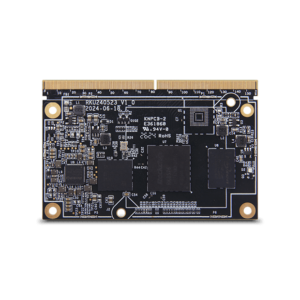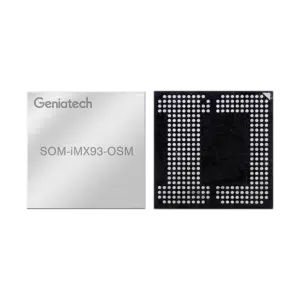How System on Modules Are Powering the Future of Smart Devices
How System on Modules Are Powering the Future of Smart Devices
Blog Article
Embedded systems have always been at the front of scientific advancement, powering sets from medical devices and professional machinery to gadgets and IoT solutions. However, a game-changing technology is taking their potential to a completely new level—enter Computer on Modules (CoMs). These small, high-performance computing panels are emerging as a essential answer, streamlining stuck process style and revolutionizing how industries approach electronics and computer on module manufacturers.

What Are Computer on Modules?
A Computer on Component is actually a small computer embedded into a simple, lightweight board. It contains all the typical components of a conventional computer, including a processor, memory, energy administration, and input/output connectivity. But, alternatively of being a standalone product, it's designed to easily include into larger programs via custom service boards. That modular design enables designers to generate customized stuck techniques while leveraging a pre-validated research primary, preserving equally time and resources.
Why CoMs Are Transforming Embedded Techniques
1. Rushing Up Time-to-Market
One key advantageous asset of CoMs is their ability to accelerate item growth timelines. Their pre-built and pre-tested models allow businesses to concentrate on customizing the service panel to meet specific request wants, as opposed to planning the foundational computing module from scratch. This rapid development design has empowered industries to create services and products to market faster, giving companies an essential aggressive edge.
2. Simplifying Updates
Traditionally, replacing embedded techniques needed a complete overhaul of electronics components, which could be costly and labor-intensive. CoMs tackle that concern by giving modularity. Designers can change only the module while keeping the company board, rendering it somewhat simpler and more cost-effective to adopt new technologies and enhance process performance.
3. Increasing Scalability and Flexibility
With different CoM configurations available, from low-power ARM-based segments to high-performance x86 alternatives, scalability is a key feature. Developers can quickly change a CoM to suit a broad spectrum of use cases, from light IoT products to sturdy machine perspective platforms.
4. Streamlining the Prototyping Method
Developing prototypes may be resource-heavy, particularly for embedded methods that need a top amount of detail and reliability. CoMs simplify this technique by offering developers a dependable, supreme quality bottom that diminishes the risk of errors throughout the original stages of development.
Driving Advancement Across Industries
Computer on Adventures are breathing new living in to a variety of industries. Healthcare tools are getting more compact and effective, commercial automation is experiencing unparalleled detail, and IoT applications are becoming better and more scalable. CoMs are not just revolutionizing stuck systems—they're paving just how for a future defined by modularity, freedom, and rapid innovation.
As CoMs keep on developing traction, one thing is clear—they are rewriting the guidelines of embedded techniques style and shaping another trend of technological breakthroughs. From little startups to world wide corporations, businesses across industries are adopting that powerful technology and driving innovation forward. The ongoing future of stuck systems hasn't appeared brighter. #
Increasing the Impact of CoMs in Numerous Purposes

CoMs are not only limited by old-fashioned stuck system programs; their potential is large and diverse. As more industries understand the benefits of CoMs, they are being integrated into a wide selection of applications, from clever houses and wearable products to autonomous cars and sophisticated robotics. These compact processing adventures have opened up new possibilities for development, permitting developers to push the limits of the thing that was formerly believed possible.
Report this page